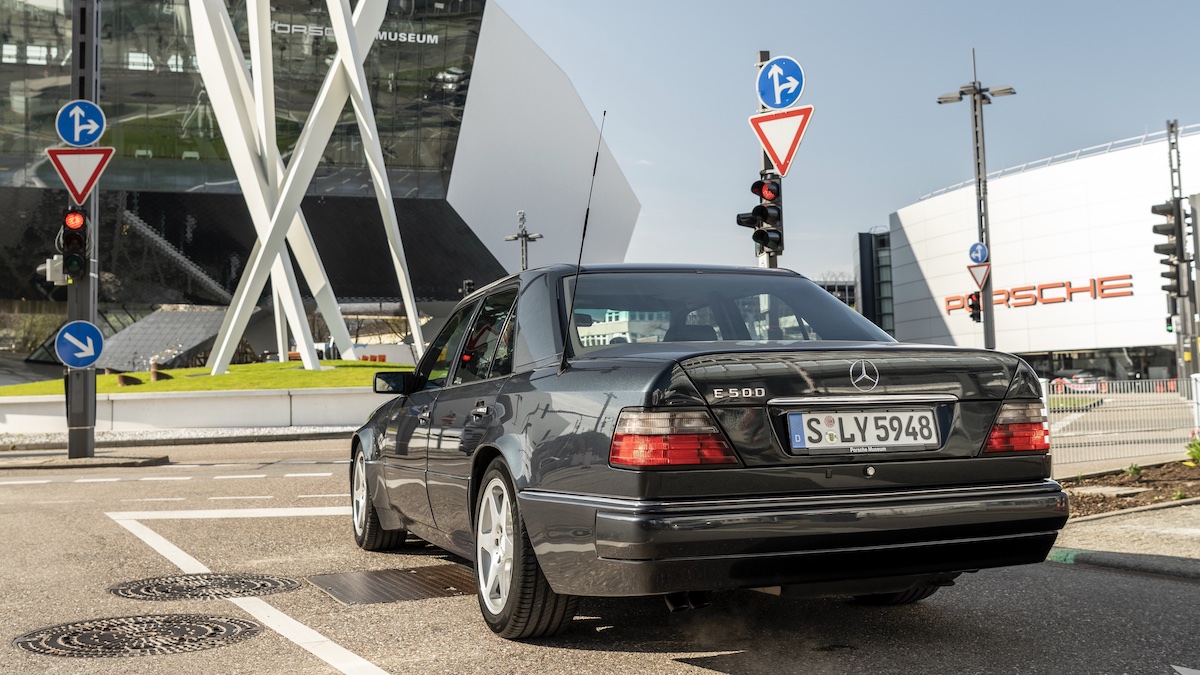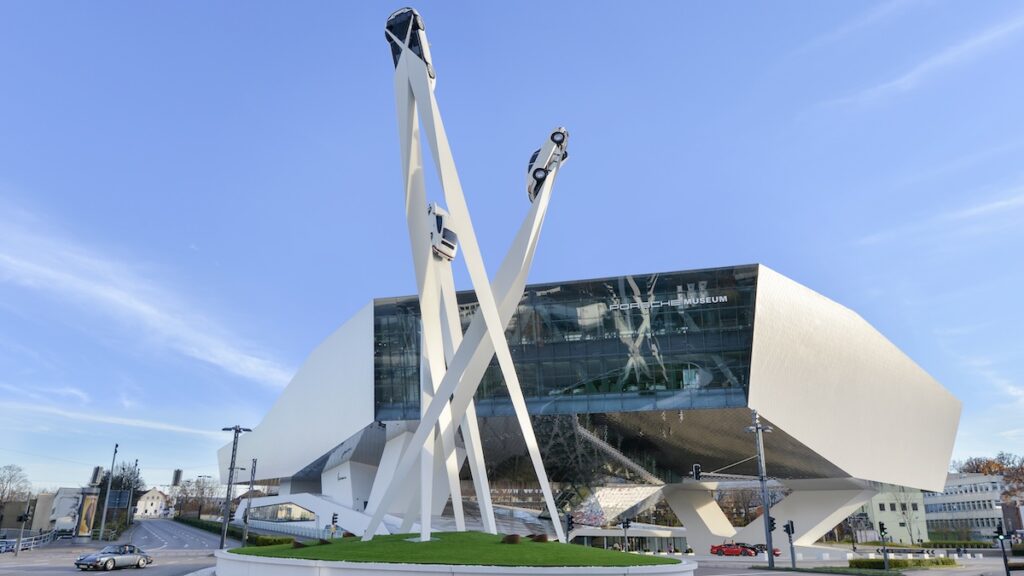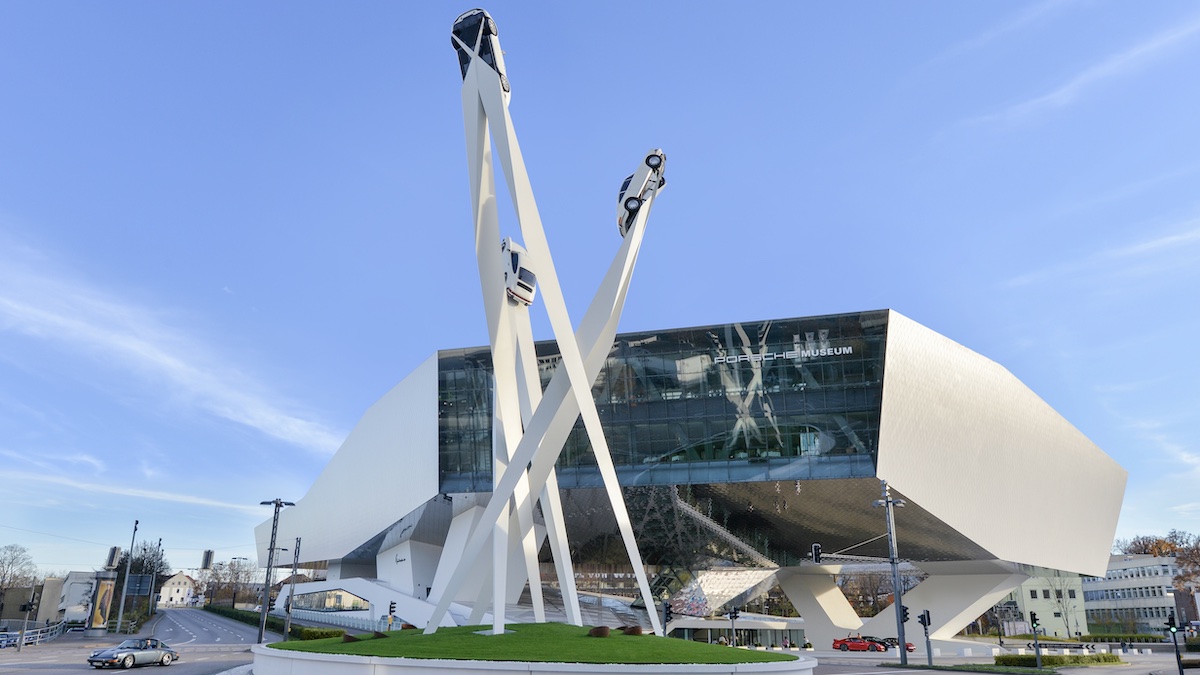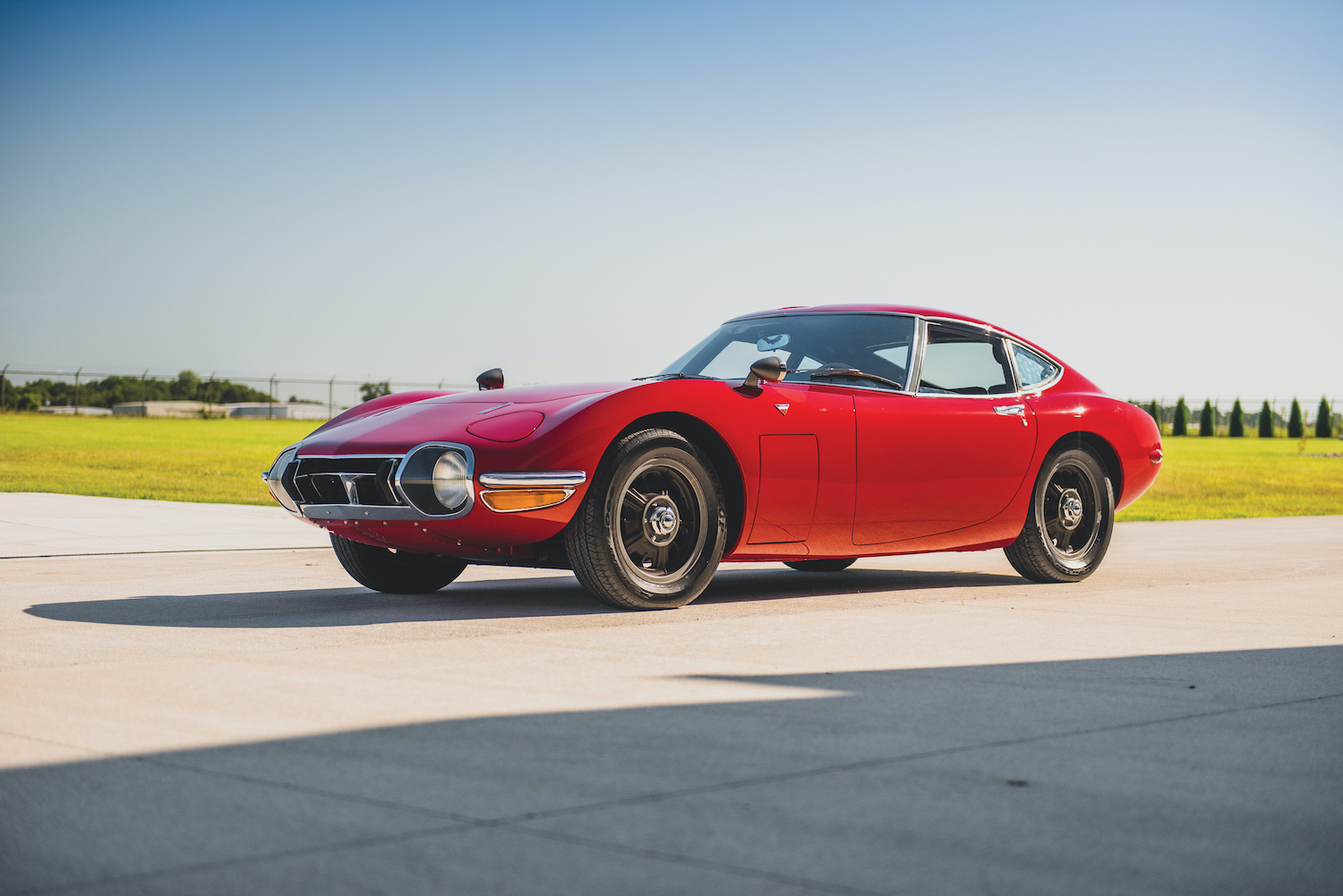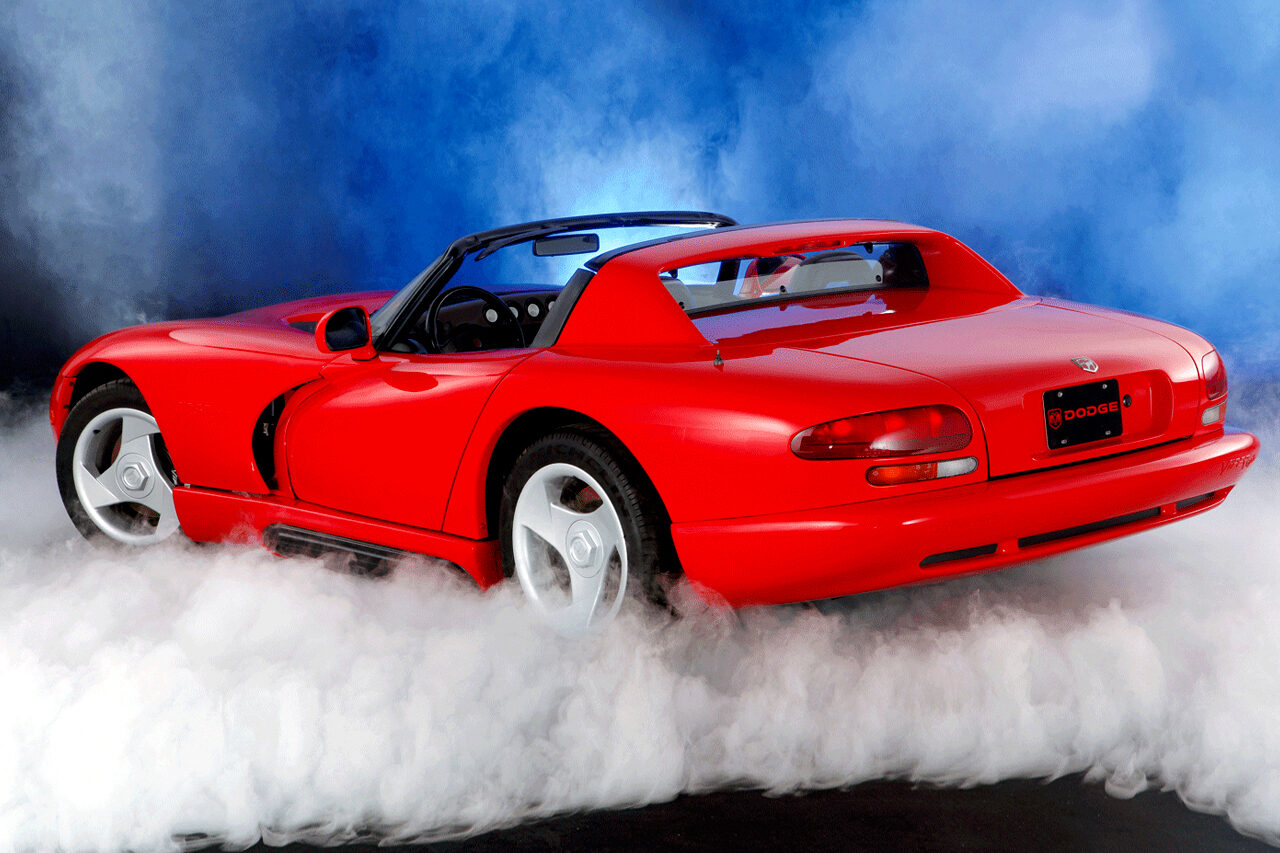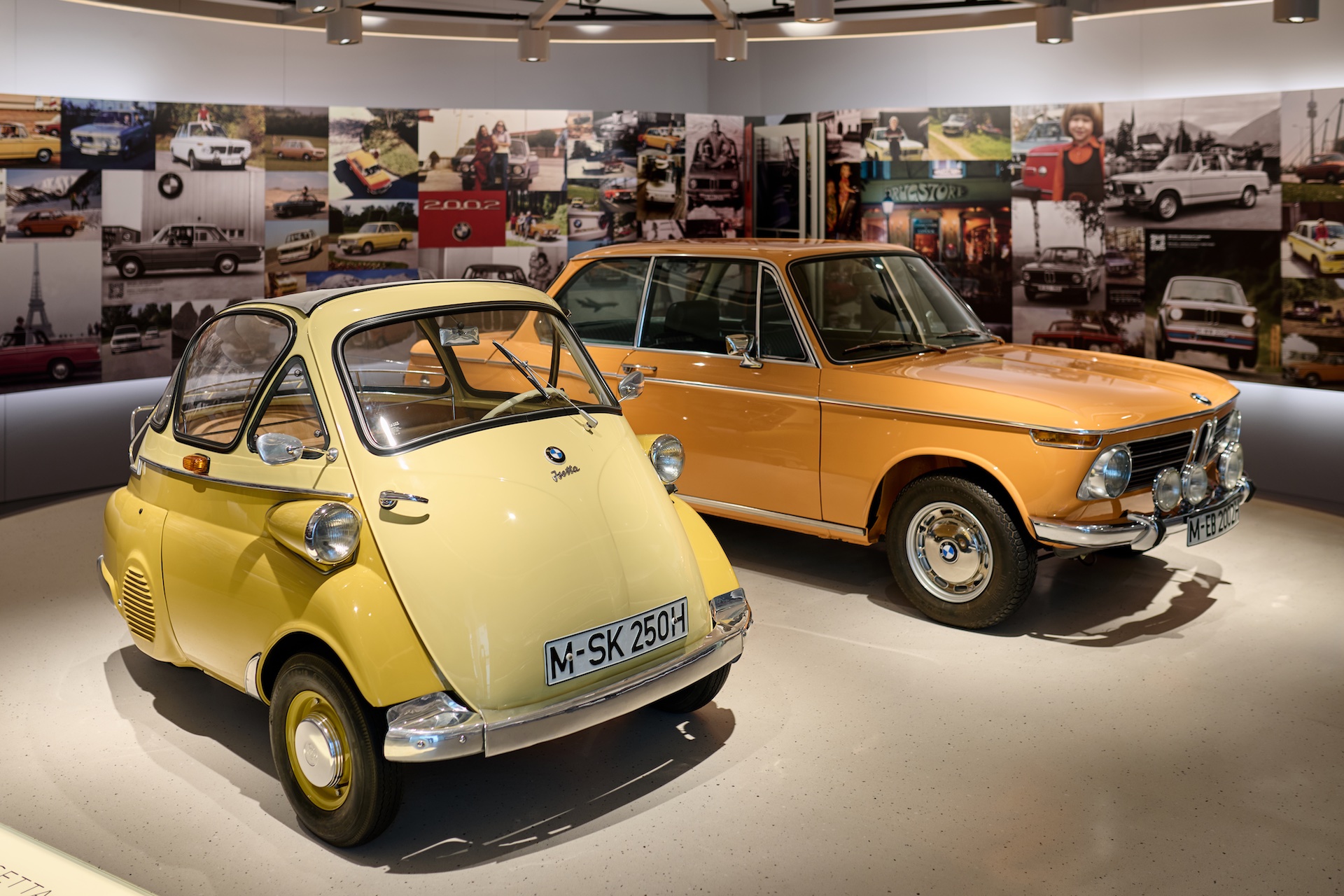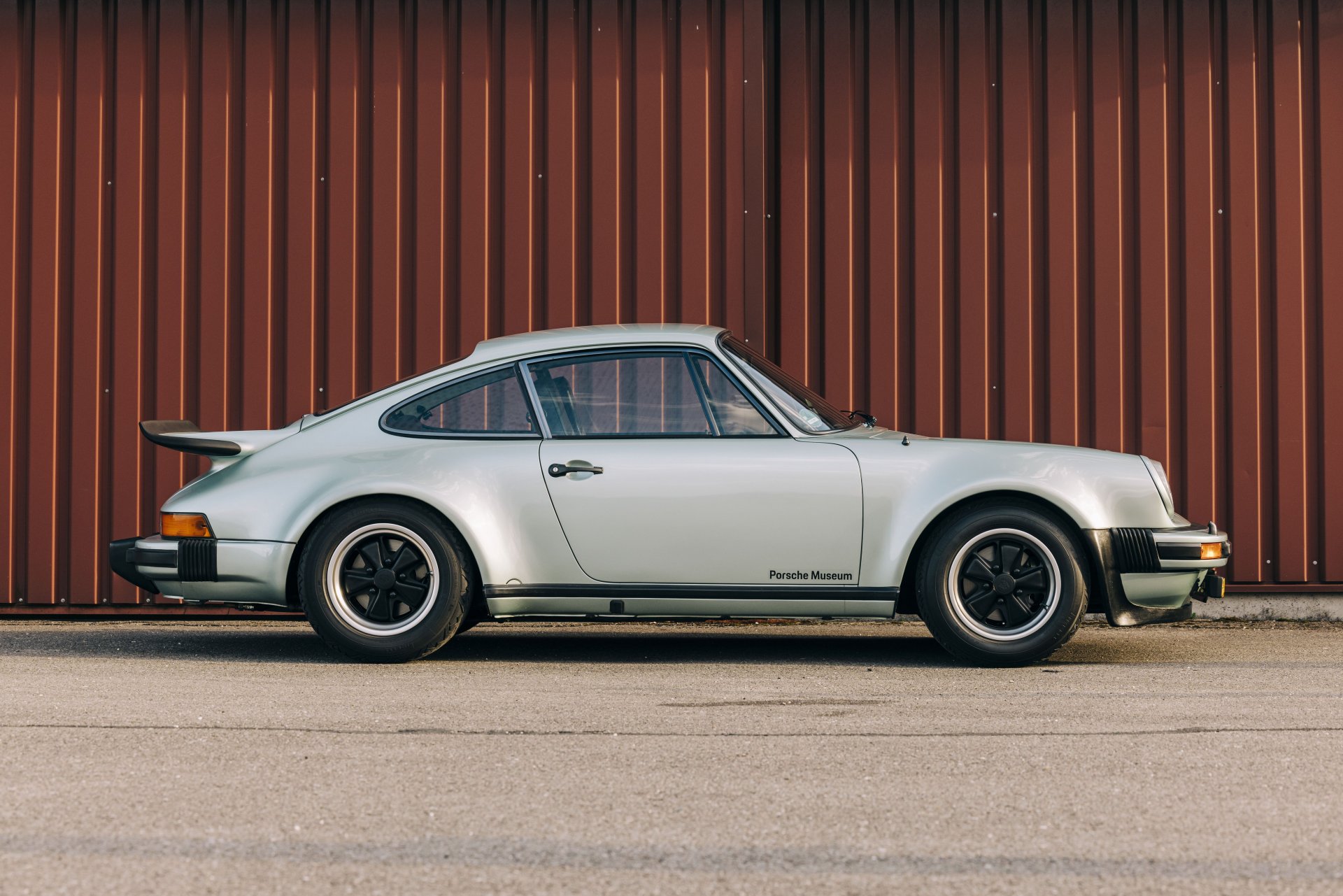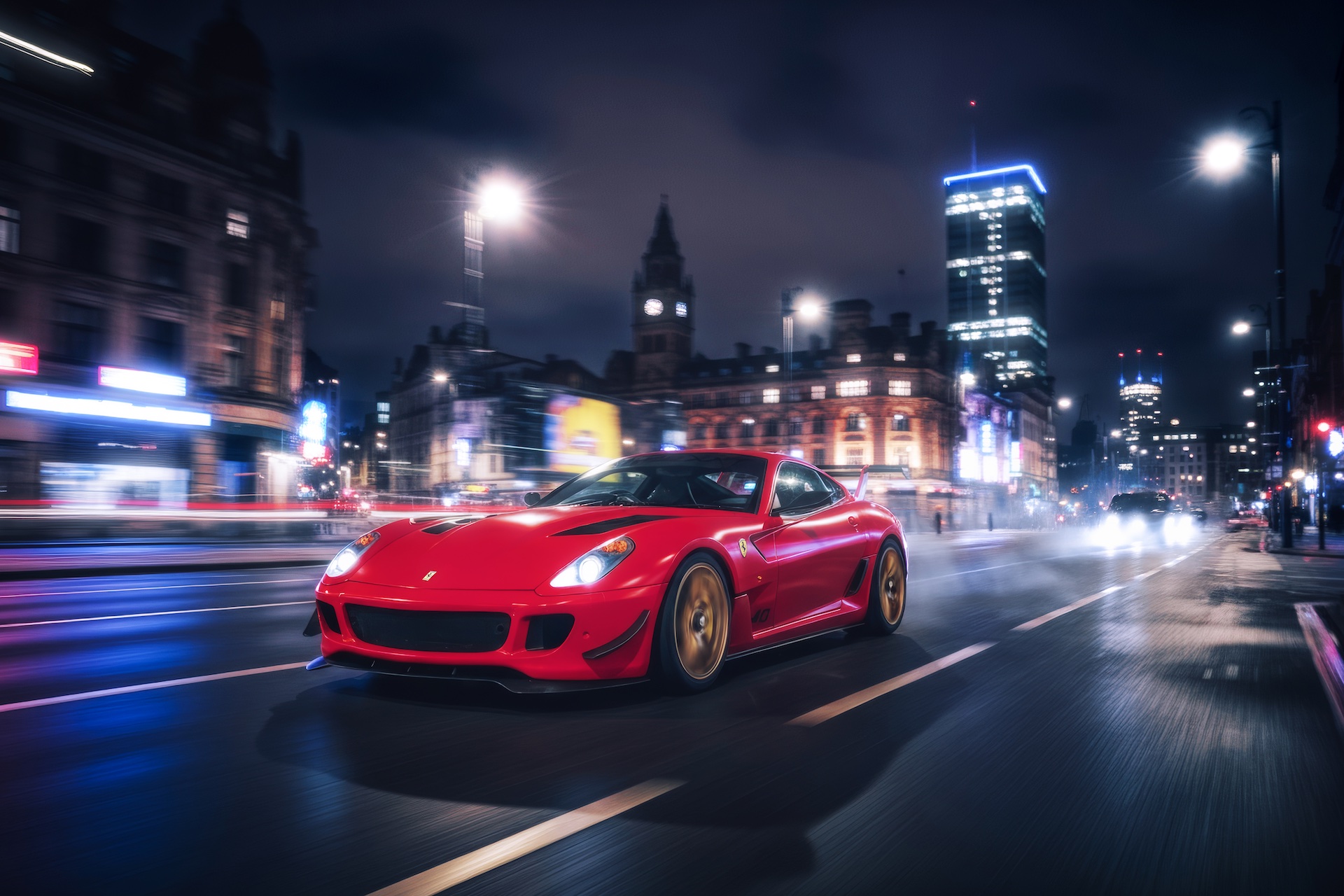I was expecting something good when I visited to the Porsche Museum in Stuttgart, Germany – after all, it’s Porsche. Yet, I honestly wasn’t ready for just how cool the whole place would turn out to be.
Sure, it’s a museum, but it doesn’t feel dusty of boring or like something your parents dragged you to during the summer holidays. This is more like walking into a James Bond lair – well, if James Bond was German, a car nerd, and had a PhD in turbocharging.
The building itself looks like something from a sci-fi film – all sharp angles and floating architecture. Inside, it’s gleaming and spotless; the sort of place where even the reflections look fast. And then, there are the cars. Oh, the cars.
In the presence of automotive royalty
The museum takes you on a journey – naturally, a very fast one – through Porsche’s history, starting with their early experiments and moving all the way up to the brand’s modern-day monsters.
You begin with vehicles including the Lohner-Porsche from 1900, which is actually an electric car. That’s right, the Taycan isn’t actually the brand’s first EV – Porsche was doing EVs before Tesla was even a twinkle in Elon Musk’s techy little eye.
Then you get to the proper stuff, such as the 356 which is cute and curvy and looks like it should be driven while wearing goggles. Following this, you enter 911 land – and trust me, there are unsurprisingly a lot of 911s here.
Each one looks a bit like the last, yet somehow, they all feel completely different. There are early ones that look a bit like they’d fall over if you looked at them too hard. Then there are 930 Turbos with more turbo lag than a confused pensioner. And the 959 – that car is a computer in a world of carburettors. At the time, it was basically Porsche saying, “Here’s the future. Try to keep up.”
Every time you think ‘surely that must be the coolest one’ to yourself, you turn a corner and then there’s another one that’s cooler, faster, and louder than the last. GT3s, GT2s, even the GT1 which is basically a Le Mans car wearing a number plate.
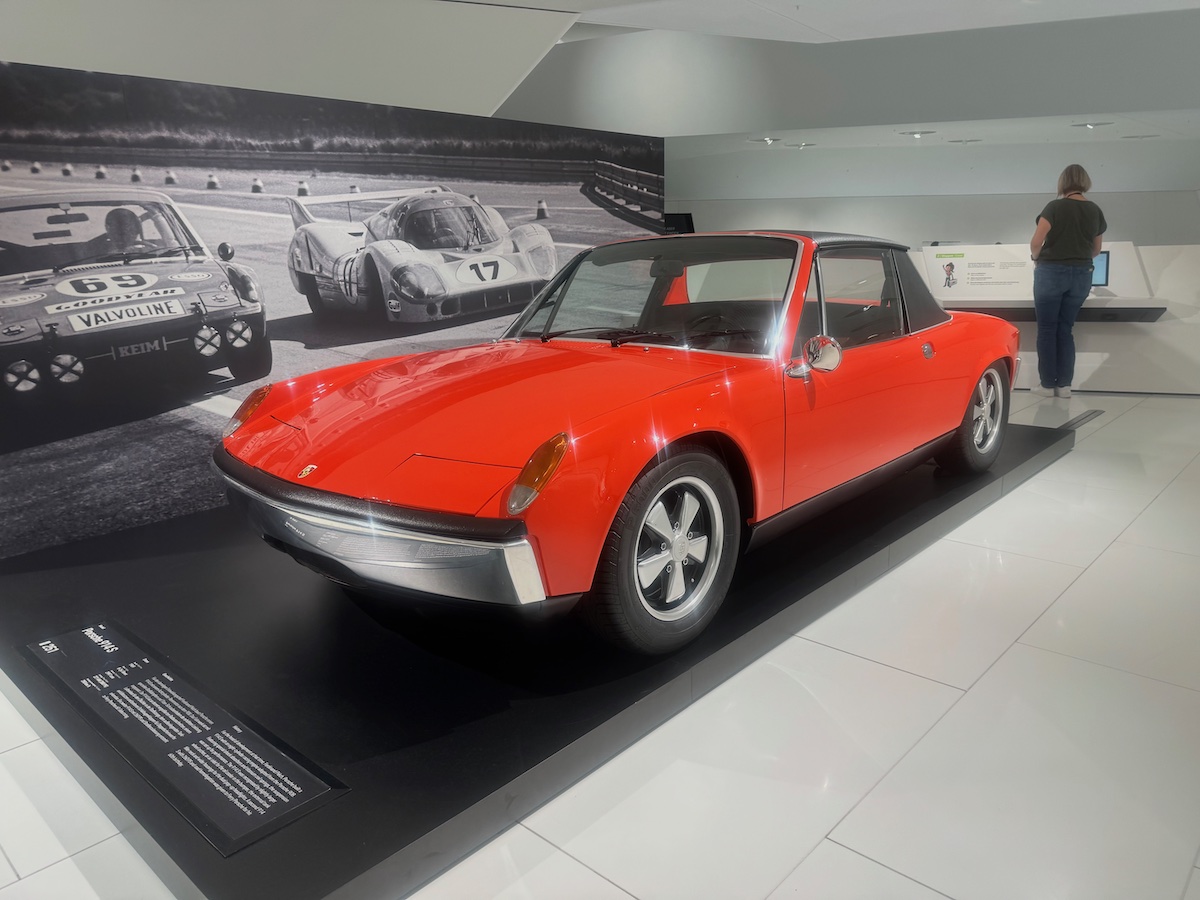
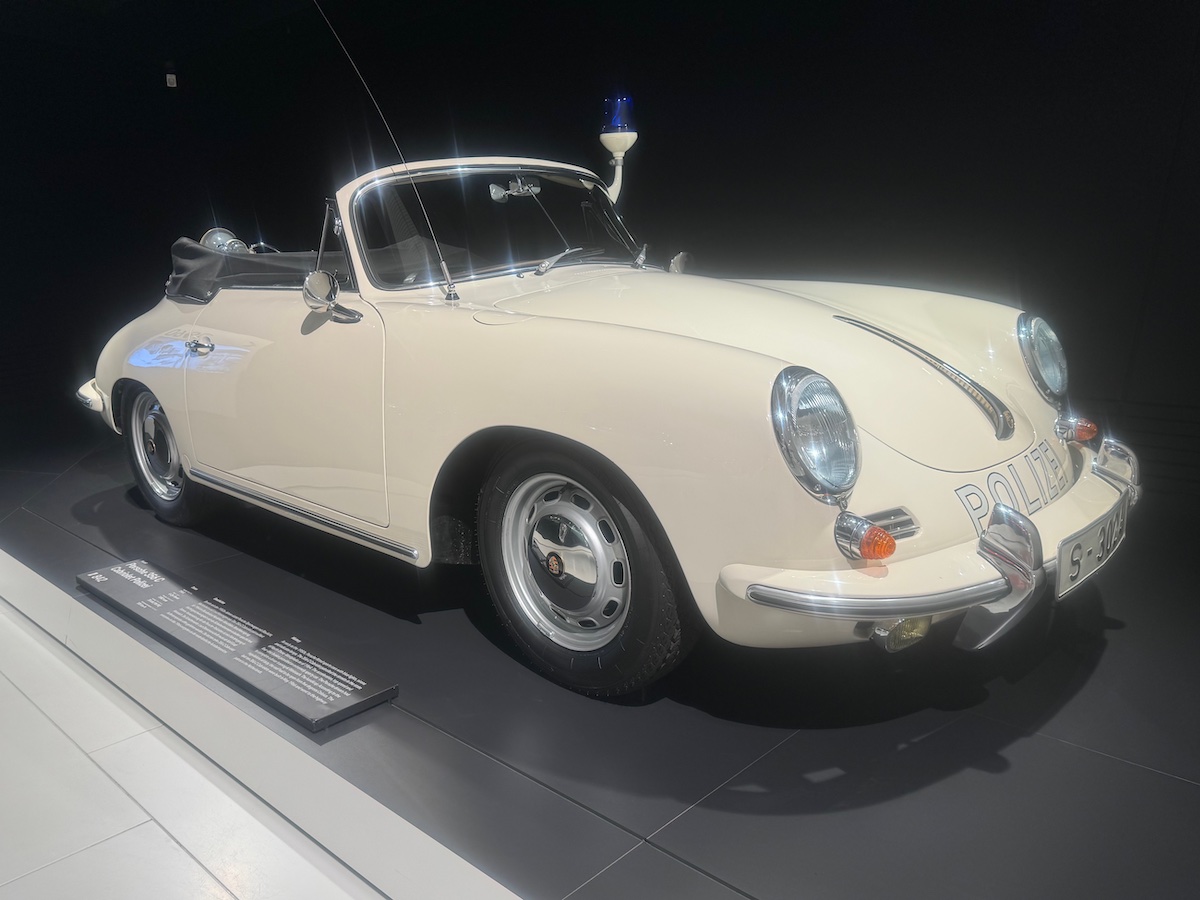
Then came the race cars…
The motorsport section at the Porsche Museum is mind-blowing, and full of proper race cars: 917s, 962s, the lot. You look at them and just feel the noise they must make. One even still had tyre rubber on it.
And there’s the 919 Evo, which Porsche unleashed on the Nürburgring just to see what would happen. What happened was physics gave up and cried in a corner.
It’s the sort of place where you start to believe that cars really can be art. Very fast, very loud, slightly dangerous art.
But just when you think you’ve got a handle on the place, you see something completely unexpected…
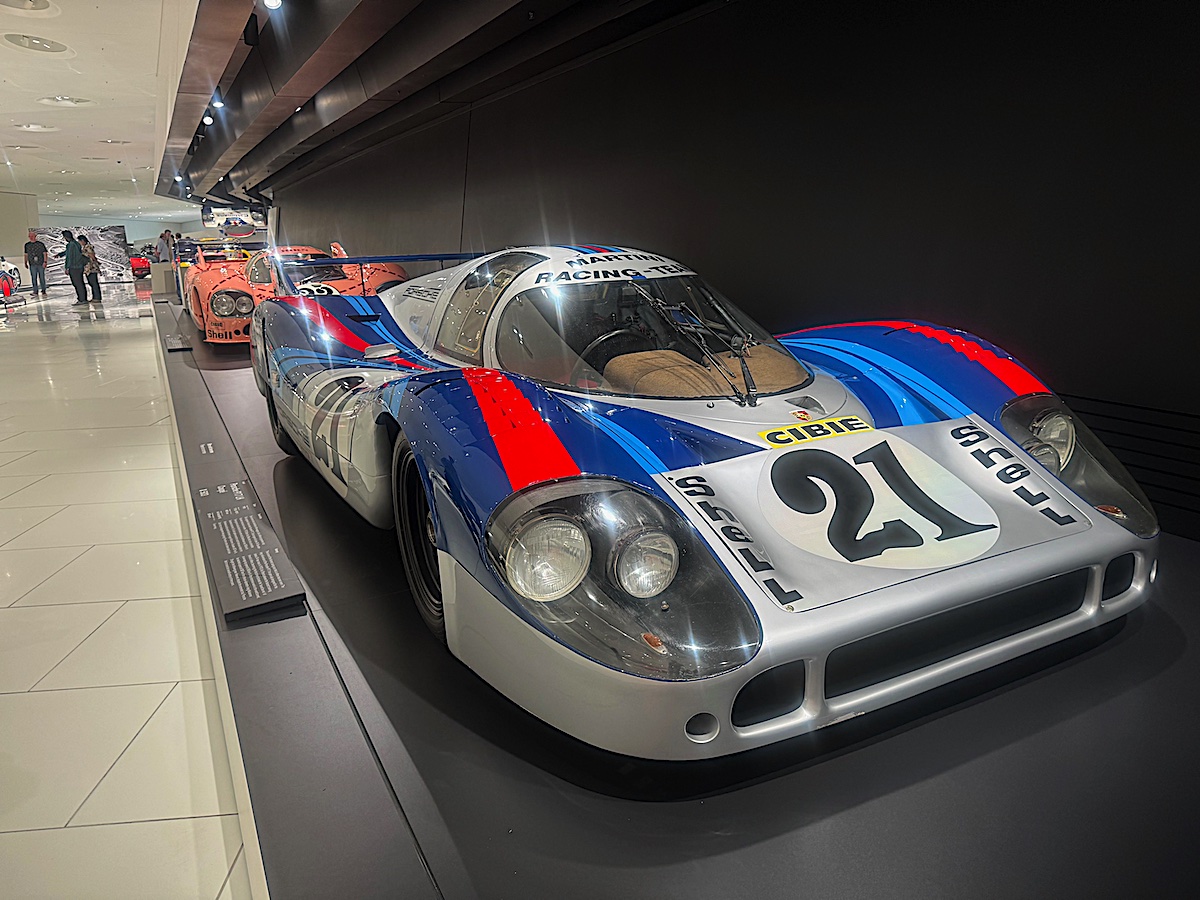
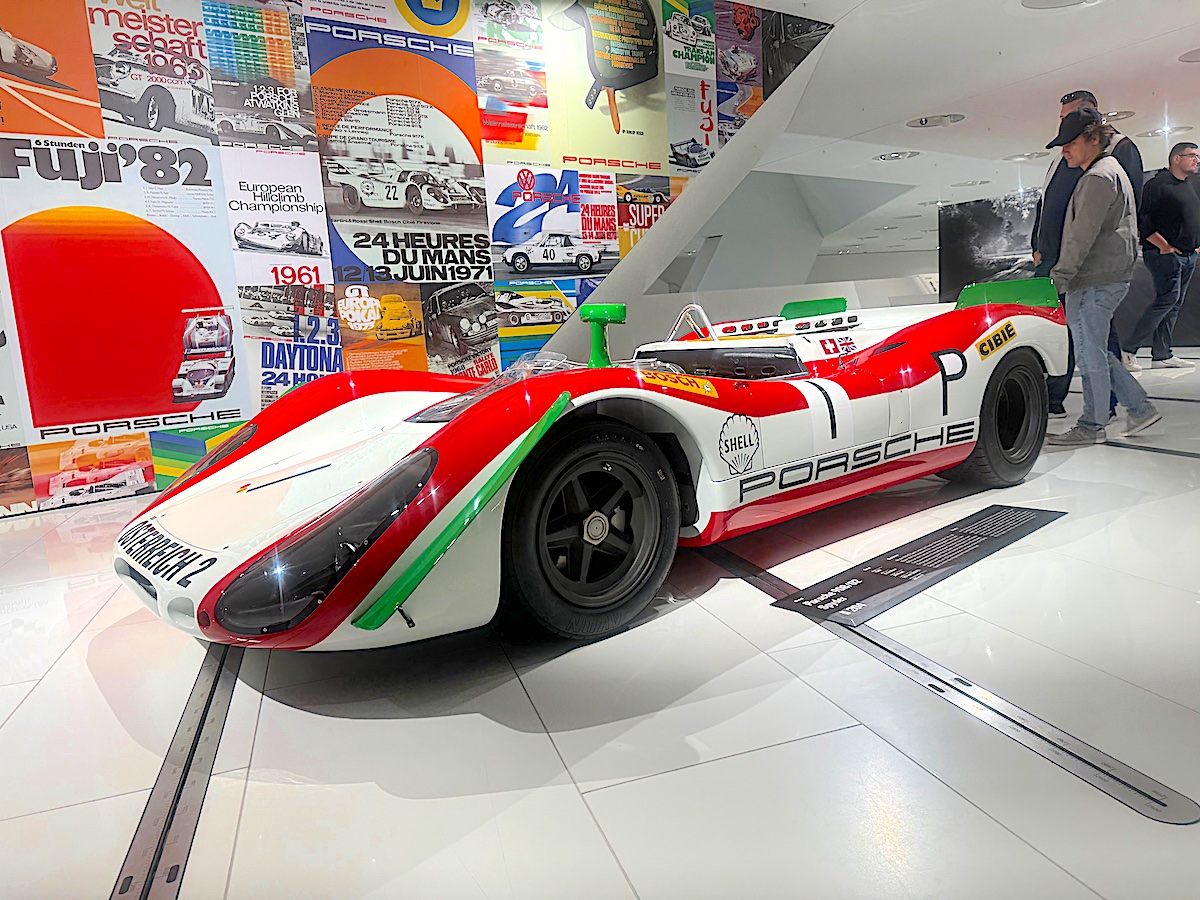
The coolest oddball in the room
There it was. Among all the Porsches — the sports cars, the race legends, the speed machines… a Mercedes?
You might be wondering what a seemingly calm, quiet, and understated saloon car from the other side of Stuttgart might be doing there, but the story behind it earns it more than just a token feature here.
This was the Mercedes 500 E – also called the E 500 after its 1994 facelift. And yes, you’re quite right to be wondering why a Mercedes is in the Porsche Museum.
The reason is that Porsche actually helped build the 500 E. No, scratch that – Porsche helped make it happen. Mercedes wanted to stuff a 5.0-litre V8 into their sensible W124 saloon, but didn’t have the space or tools to do the whole thing.
So, they called Porsche, who were going through a bit of a rough patch financially, and they said, “Sure, we’ll do it. Why not?” What they created together was incredible.
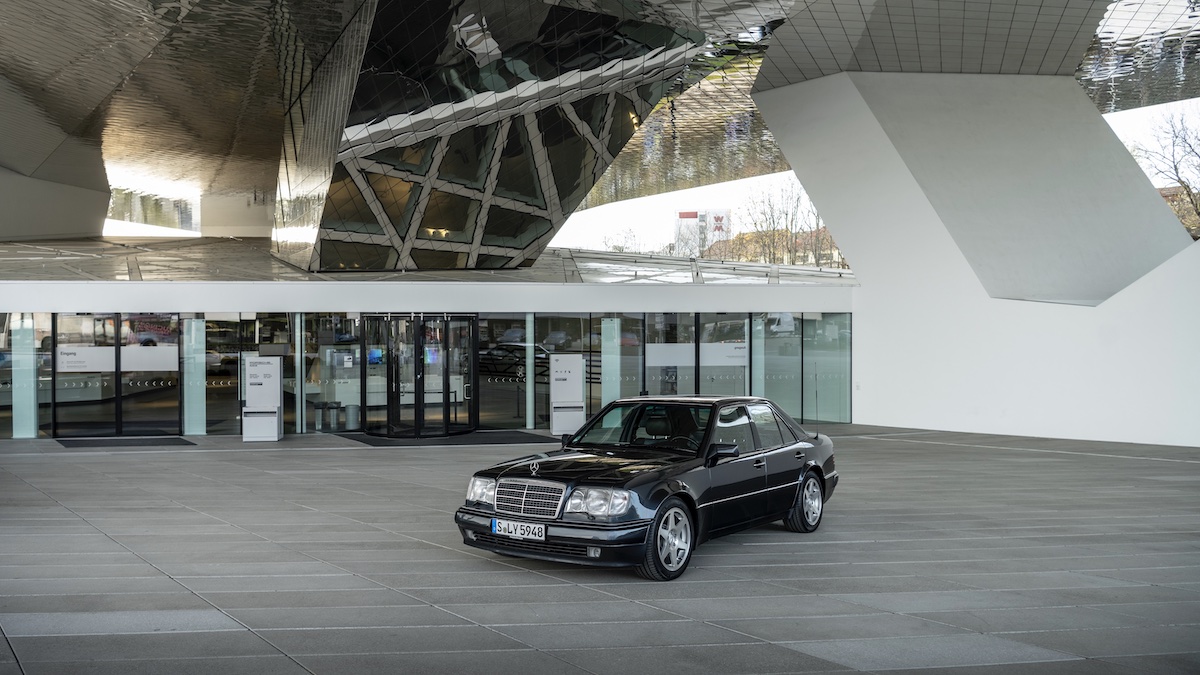
From the outside, it looks like your accountant’s car, but on closer inspection, you’ll note the flared wheel arches, wider track, and of course a properly muscular V8 crammed under the bonnet.
It’ll do 0-100 km/h in 5.5 seconds, and feels like it’s been engineered by people who like going very fast without shouting about it. It’s basically the automotive incarnation of Jason Bourne.
I love that it’s here, right in the middle of all the Porsches like a little easter egg for the real nerds. It’s Porsche showing off their ability to take something sensible and turn it into something utterly brilliant, without ruining it.
And more than that — it’s cool. The kind of cool that doesn’t need to be loud. It just is.
The here and now
Eventually, you reach the modern era – the SUVs, Taycans, and hybrid tech, all of it very sleek and clever.
You can also watch engineers working on restorations, which made me feel simultaneously amazed and utterly inadequate. There’s even a gift shop where you can buy scale models of the cars you’ve just fallen in love with – and probably spend more than your first actual car cost.
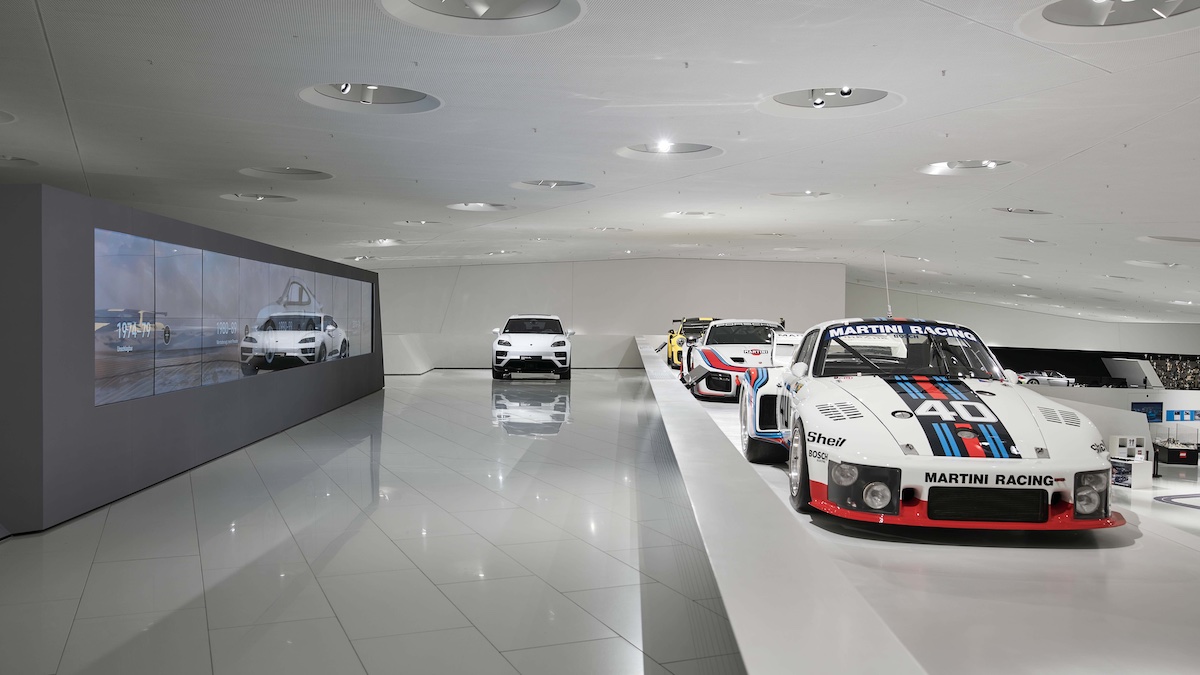
The whole place feels like one big celebration of what happens when clever people get obsessed with going fast. There’s no cheesy music, no daft exhibits – it’s just beautifully made cars, beautifully presented.
And somehow, the Mercedes 500 E – the odd one out – ends up being one of the highlights. Not because it’s the fastest, or the loudest, or the most famous, but because it’s special. It’s proof that when two great car companies work together, the result can be quietly magnificent.
The Porsche Museum is brilliant. If you’re into cars – and I mean really into them – you’ll love it. If you’re not already, you’ll probably become someone who is. It’s full of history, horsepower, and the kind of engineering that makes you want to stand back and nod approvingly.
And if you ask me? That 500 E proves that Porsche’s genius isn’t just in what they build for themselves, but in what they help others build, too.
Retro Rides’ Rating: 10/10, would go again. Might move in. Bring snacks and sensible shoes.
